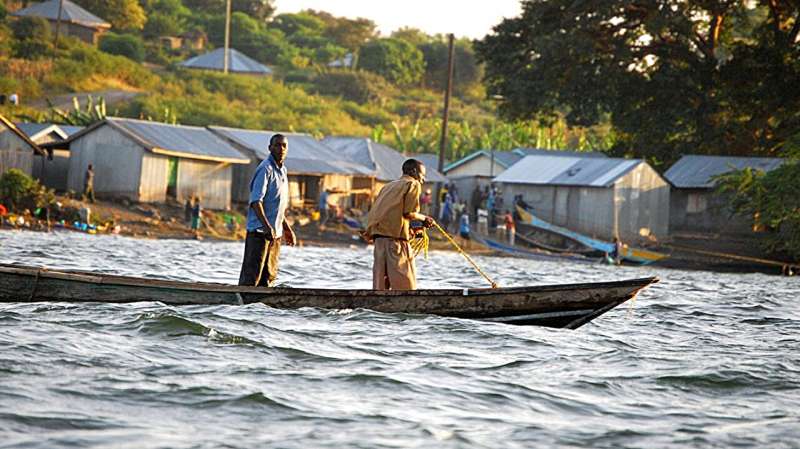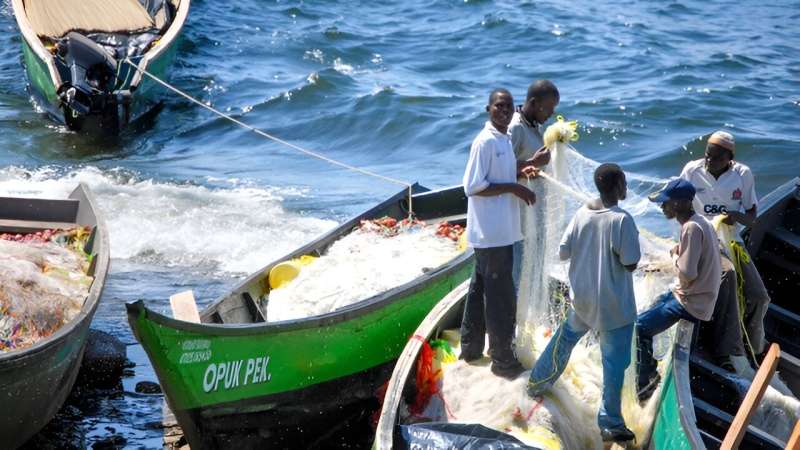From Zambia to Afghanistan, WFP warns El Niño’s extreme weather is causing a surge in hunger

By —Gerald Imray, Associated Press
hungerWorld May 22, 2024 4:41 PM EDT
CAPE TOWN, South Africa (AP) — Extreme weather attributed to the El Niño phenomenon is causing a surge in hunger in several countries, including Zambia and Afghanistan, the UN’s World Food Programme said Wednesday, and called on donors for much-needed help.
El Niño is a natural, temporary and occasional warming of part of the Pacific that shifts global weather patterns, and studies say that as the world warms, they may get stronger.
Tens of millions of people in southern Africa rely on the weather to grow food to feed themselves.
In a statement, the WFP warned that southern Africa was the “epicenter of the crisis” after a cycle of floods and drought has battered the region over the last three years. Three countries, Malawi, Zimbabwe and Zambia, are the worst affected and have seen between 40-80 percent of their staple corn crops wiped out by drought this season, leaving millions impacted, according to the UN food agency.
The WFP said executive director Cindy McCain had traveled to Zambia and seen how “severe drought has wiped out harvests in a region where 70 percent of the population relies on agriculture to survive.”
WATCH: ‘Climate refugees’ sue British government for failing to protect homes from climate change
“We can’t ask millions to wait for the next harvest season — a year from now — to put food on their tables,” McCain said in a statement. “These families need our support today while we help to build a more resilient future.”
WFP said its “teams have started to respond but US$409 million are needed for six months to assist 4.8 million people in Malawi, Zambia, and Zimbabwe.”
Other countries, including Congo and Afghanistan, are facing similar problems due to changing weather conditions which have led to destroyed crops, livestock deaths and displaced people, causing a surge in hunger, the agency said in a separate statement.
This comes as hunger crises caused by conflict in Gaza and Sudan are already stretching the agency’s aid capacity.
The WFP’s call for aid came days after the regional Southern African Development Community made a plea for help after a special virtual meeting of leaders and government officials to discuss the impact of the extreme weather.
In a joint statement, the southern African countries said the region needed $5.5 billion to help more than 61 million people.
There had been a “multifaceted and cascading impact of the El Niño-induced drought and floods across multiple sectors,” the regional bloc said, noting how it had caused other problems, such as contributing to large and deadly outbreaks of the water-born cholera disease. Countries that depend on hydroelectric generators, like Zambia, are struggling to produce enough electricity because of the drought.
WATCH: Why young Americans are pushing for climate change to be taught in schools
Alongside El Niño, the southern African region has recently seen a series of tropical cyclones that scientists said were likely made stronger and wetter by human-caused climate change and the increase in global temperatures.
While the African continent contributes the least to climate change, it is expected to suffer the most. Poorer countries are generally not as well-equipped to deal with the impact.
Even before the floods and drought, food insecurity and malnutrition were already at alarming levels in Malawi, Zimbabwe and Zambia and humanitarian assistance had stalled because of funding shortages for aid, WFP said.
The three countries have all declared national disasters over this year’s drought, and others have provided equally grim assessments.
The United Nations humanitarian agency said this month that around half of Zimbabwe’s population of 15 million needed “lifesaving and life-sustaining” help because of the drought.
Last week, the Action Against Hunger non-profit warned that “a hunger crisis may be imminent” in Kenya in East Africa after catastrophic floods displaced more than 250,000 people.
Kenyan fishers face increased drowning risk from climate change

Fatal drownings are a big risk for small-scale fishers on Africa's largest lake, with many of those deaths attributed to bad weather—conditions that are likely to worsen with climate change, according to a new studyLake Victoria—bordering Kenya, Tanzania and Uganda—is heavily fished by some 200,000 fishers, in spite of frequent severe thunderstorms and its reputation as one of the most dangerous bodies water in the world.
These findings are especially concerning considering that thunderstorms, wind and rain are predicted to become more intense and up to 10 times more frequent by the end of the century, the authors note in the study, published in PLOS ONE.
"Drowning deaths are really a neglected risk factor," said Kathryn Fiorella, assistant professor in the Department of Public and Ecosystem Health in the College of Veterinary Medicine and a co-corresponding author of the study. The other co-corresponding author is Ranaivo Rasolofoson, a postdoctoral researcher, formerly in Fiorella's lab, and currently at Duke University.
"The main goal of our work was to understand what are the risk factors that people see contributing to drowning deaths," Fiorella said.
On top of climate issues, overfishing has reduced commercial Nile perch populations over the last few decades, the authors wrote. Fishers now focus predominantly on sardine-like omena, which are found far offshore and must be fished for at night, and attracted using lights. The shift has made fishers more vulnerable to drowning, since thunderstorms are more likely to occur at night, when visibility is low, making rescues far more challenging.
Low and moderate-income fishers fish to provide for their families, which pushes them to venture out even in poor weather conditions. When fishers drown, their loss leads to heartbreak and creates far-reaching negative socio-economic consequences for their households.

In the study, the researchers worked closely with the Kenya Marine and Fisheries Research Institute on the Kenyan side of the lake to survey people with knowledge of drowning deaths at 43 landing sites. The "verbal autopsies" revealed that fatal drownings were attributed to bad weather 42% of the time. In those cases, strong wind was recorded 47% of the time, moderate wind in 22% of those weather-related deaths and heavy rain accounted for 12%.
When fishers died during bad weather, 69.5% of them weren't wearing life jackets and 67.5% of them lacked navigation equipment. Inability to swim and drug and alcohol use also contributed to these deaths. Motorized boats were involved in 43% of the incidents.
"When you look at the proportion of boats that are motorized, it is much lower than that," Fiorella said. "It suggests that being able to use a motor and get out further could potentially be a risk factor."
The researchers proposed a number of strategies to improve safety for fishers. For starters, while there are laws in Kenya for the use of life jackets, fishers who can't afford them are often the target of enforcement. One solution might be to make life jackets and navigation equipment—which should be considered part of the boat—the responsibility of the boat owners rather than the fishers, and require the owners to pay the fines.
Another possible strategy is delivering weather warnings through mobile phones. Providing swimming and rescue skills to fishers could also help, Fiorella said.
"There is an established system where fishers are registered at landing sites, so you could imagine a scenario where people who arrive get some basic rescue and water safety training that would be really valuable," she said.
Co-authors include Horace Owiti Onyango, a doctoral student in Fiorella's lab, and Fonda Jane Awuor and Christopher Aura at the Kenya Marine and Fisheries Research Institute.
More information: Ranaivo A. Rasolofoson et al, Climate change: A pointer to increased small-scale fisher drowning deaths, PLOS ONE (2024). DOI: 10.1371/journal.pone.0302397
Journal information: PLoS ONE
Provided by Cornell University Self-portraits give voice to vulnerable Cambodian fishing communities
No comments:
Post a Comment